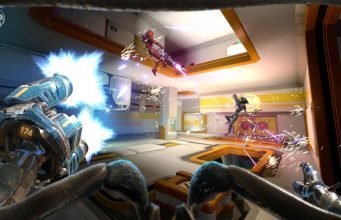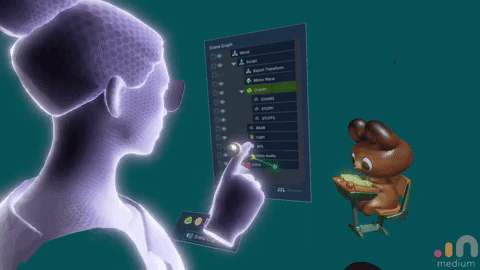https://ift.tt/2yRGv7t
The popular online payment platform patents AR glasses in hopes of a ‘look-and-buy’ economy.
Have you ever wished you could just walk down an aisle at any store, and simply look at an item to find out if it was in stock, how much it cost, what the payment options are, get information on the return policy and then purchase the item without ever having to go through a checkout or even pulling out your smartphone or credit card?
A recently approved patent filed by massive digital payment platform PayPal with the United States Patent and Trademark Office titled, “Augmented Reality View of Product Instructions,” would allow you to do just that. According to the patent, a pair of AR glasses would create a ‘look-and-buy’ shopping experience that uses your PayPal account to purchase items just by looking at the product and then navigating a pop-up AR menu.
It’s a bold concept that could very well end up making PayPal quite a bit of profit.

Currently, PayPal charges a fee of 2.9% of the transaction plus a fixed fee of .30 cents per U.S. transaction (fees and fixed fees vary in other countries). With over 60% of all web transactions being processed by PayPal, that adds up to a huge chunk of change for the company. In 2017, PayPal reported $13.06 billion dollars in revenue from said fees.
A recent PayPal report showed the company brought in $3.69 billion in revenue during the first quarter of 2018 – an increase of $700,000 from their first quarter the year before – and with 237 million customers using PayPal, the opportunity to leverage a tool like AR glasses to make shopping and spending easier would be a dream not only for the customer, but for businesses and PayPal as well.
But those numbers are mostly web transactions, and with more and more brick and mortar retailers accepting payments through PayPal, and with AR wearables becoming a hot subject, it makes sense that a company like PayPal would want to figure out a way to leverage both of those facts to their advantage.
The idea of an AR and VR shopping experience is far from new. Companies such as eBay (who owns PayPal) and Alibaba both have VR shops, and box stores like IKEA, Amazon, and other shopping apps allow customers to preview products in AR.
However, being able to just walk down the aisle of a store, choose an item simply by looking at it, and then pay for it through your PayPal account would be much different. Plus, for those of you who hate shopping – merging the physical and digital shopping experience together might make a trip to the store less daunting and dare I say, maybe more fun?
You could even walk down the street and shop simply by looking at the clothes on the mannequins or the items in the window display, never actually needing to step foot into the store.
What it boils down to is that PayPal’s AR glasses would be all about convenience. Of course the potential of shopping through AR glasses goes beyond the ‘look-and-buy’ scenario.

Imagine finding yourself with a couple of extra hours in your day, and on a whim, you decide to purchase movie tickets just by looking at movie poster. Or maybe you’re exploring a museum and you find a piece of art that you hope comes printed on a t-shirt in the museum store. On an impulse, you could just look at the artwork, and through your PayPal AR glasses, see a menu that would allow you to choose your size, add it to your cart, and then pay for the shirt using your PayPal account.
It’s that impulse, or in this case ‘glance-and-go’ purchase, that could provide a big jump of revenue for PayPal. A study of 2,000 U.S. consumers showed that we can spend an average of $450 a month on impulse purchases. That’s a whopping $5,400 a year of potential additional revenue per person. AR glasses tethered to your PayPal account would make capturing those sales a whole lot easier.
Still, a lot of questions about security lingers when it comes to making purchases through AR glasses At this point PayPal’s AR glasses exist as just a patent with no actual release date planned.
Image Credit: PayPal / RocksDigital
The post PayPal Sees A Future With AR Glasses appeared first on VRScout.
from VRScout https://ift.tt/2N9do2r
via
IFTTT

























